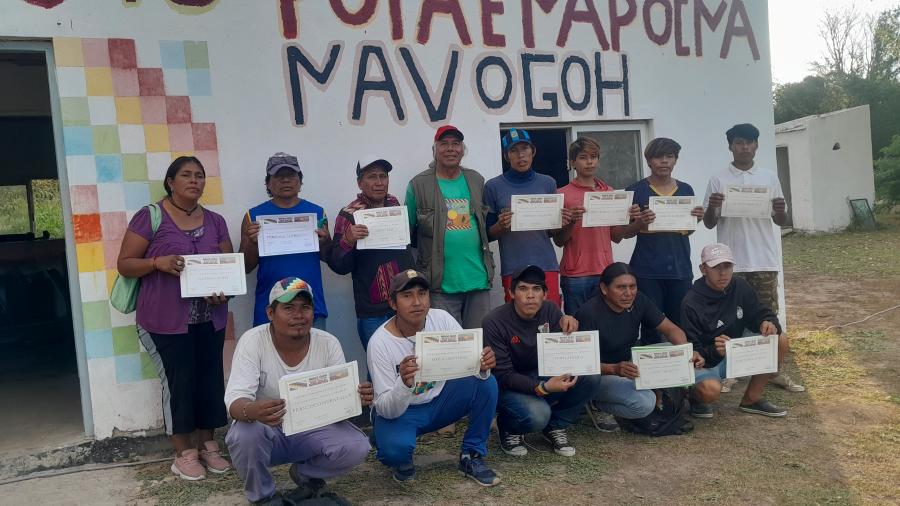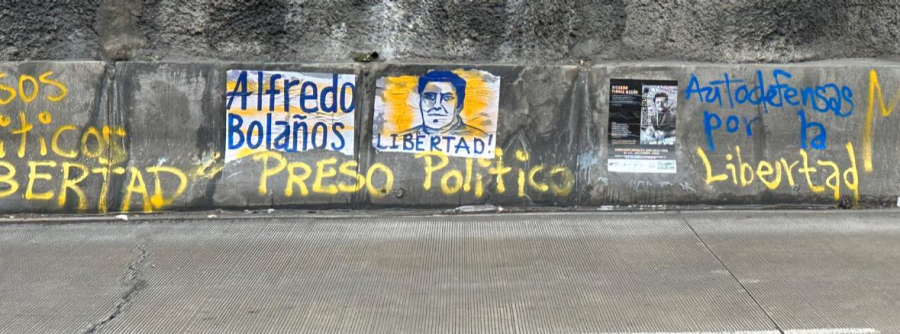Four main tributaries How through, the Sierra Madre Occidental in Mexico's state of Jalisco carving precipitous canyons several thousand meters deep; the sandy soils of the surrounding mountains allow a forest composed largely of scrub oak and pine. Until quite recently, this combination of formidable terrain and poor soils allowed the resident Huichol Indians a rare, and for them desirable degree of isolation. There they'd practice subsistence agriculture on the canyon floors or adjacent plateaus and hunt in the surrounding upland forest.
They also maintained an extraordinarily complex religious system which draws them periodically out of the mountains on pilgrimages to the northeast in search of peyote or west to the Pacific, for knowledge and purification. Their religion, particularly its artistic expression (yarn paintings) and their use of peyote, has placed them among the most widely known Indians in the Americas. Most Huichol, however, prefer isolation to fame.
For some other Mexicans, the Huichol's situation stigmatized them as "marginal." The National Institute of Indian Affairs (INI) invested time and money to integrate and incorporate the Huichol into the mainstream of "national" society, and by extension, national development. In the early 1950s INI established the first rural schools and, more important, initiated a long process of land titlement which eventually guaranteed the Huichol tenure to approximately 2,500 square miles of contiguous communal territory. At the same time, largely to provide an entrance for INI, air strips were constructed at strategic locations within the territory providing the only openings into the Huichol's privileged isolation.
More threatening penetration began 15 years later. In 1975 the first dirt road was cut into the northwest sector, and in 1980 another road was constructed along the southeastern border. During this period of "incorporation" the Bank of Rural Credit began to finance programs to modernize Huichol agriculture and to promote cattle raising, all of which has had its effects on Huichol society. Although they still maintain a strong sense of their unique culture and a general socio-political cohesiveness, they have entered the wage economy and must confront outsiders whose arrival was ensured by the introduction of roads. As a consequence of these new interactions, their regular pilgrimages to the sea often become prolonged stints of wage labor on coastal plantations. Loggers, aided by newly constructed access roads, began to cut down the forests surrounding Huichol territory. And through special concessions, often obtained illegally, they began to deplete the forests inside Huichol territory as well.
Consequently, in November 1980, at the request of several Huichol elders, a technical report on the situation of the forests on Huichol lands was prepared by the Institute of Wood, Cellulose, and Paper, and by the Botanical Institute, both of the University of Guadalajara. The report generated considerable public controversy, and thus provided the Huichol leaders with an unprecedent platform to discuss their needs and grievances.
The Institute's studies revealed that the Huichol forests could not be timbered without serious and irreparable damage. The forests were described as already in serious decline. The number of young saplings was insufficient to replace the trees lost through disease, old age, and above all, intensive lumbering. In some areas reforestation had become impossible, and the forest had degenerated into scrub chaparral of no economic value. With the resultant decline in fertility, streams and subterranean water supplies might disappear, turning the area into a semi-desert. The reports stressed that the remaining woodlands were of such low density as to be hardly classifiable as forests, and warned that any uncontrolled exploitation could destroy the entire ecology of the area.
Both reports called for extensive and sustained reforestation efforts, and a complete halt to all lumbering, except for the selective extraction of old, dead and badly diseased trees to facilitate new growth. The studies recommended the creation of nurseries, and a program of planting and caring for new trees. Acknowledging that these were Huichol lands, the report suggested a program to train volunteer Huichol in reforestation techniques and care of their forest lands.
The report of the Wood, Cellulose and Paper Institute went a step farther by suggesting projects to help the indigenous population obtain regular sources of income to replace the sale of cut timber. The institute suggested small industries, preferably manual, which utilized dead or diseased trees and encouraged the Indians' native artistic ability and manual dexterity in programs of carpentry and wood carving.
The environmental impact reports worried Huichol leaders who recognized the threat to their land and society. Therefore, they embraced Project Tuapuri, a carpentry school-workshop designed to stem the flow of Indians out of Huichol territory through local employment opportunities demonstrating their claim to the forests through visible use of the woodlands. Various aspects of this project have been discussed in previous CSQs; this brief article focuses on the value of the project as a means for resource management and control.
The project began very modestly at the request of community leaders of Santa Caterina Cuexcomapitlan, or Tuapuri. Under the guidance of the president of communal goods (the principal agrarian authority), and in regular consultation with that community's chief elected authority - the tatoani, course work for 10 to 15 young Huichol was initiated in late 1982. During the first course period the students were taught to identify those trees most suited for felling; healthy specimens remained untouched. The cut lumber was dried by a solar kiln designed by an Austrian physics professor, and the first classes - basic carpentry and tool maintenance - were conducted by a forestry professor from the University of Guadalajara. Overall coordination of the project was in the hands of Juan Negrin, a Mexican student of Huichol religion and art who is deeply concerned with the dangers of resource depletion in Huichol territory.
Following discussions by the community leaders, the school workshop was strategically rather than conveniently located. They built it on a high windswept ridge where no Huichol actually reside. Bitterly cold in the rainy season, but alongside the loggers' access road, they located it in one of the areas most subject to territorial invasion and timber theft. The school thus served as an outpost or marker of the Huichol forest. As trucks laden with logs ambled along the rough road, the activities underway at the school, however modest at the outset, signaled that the Huichol were actively utilizing their forest resources.
The project produced a series of trained carpenters who, in addition to their own work, have been recruited as instructors for work in similar workshops in two of the other sub-regions of the Huichol territory. The project has helped but not stopped the movement of Huichol from the traditional lands. However, in terms of illustrating a concern for their environment and demonstrating a rational management program, the Huichol's efforts have been exemplary. Moreover it has occurred without the slightest loss of Huichol cultural pride. On the contrary, the effort has maintained a strong sense of community property amid efforts by government agencies to weaken that unity.
Article copyright Cultural Survival, Inc.


